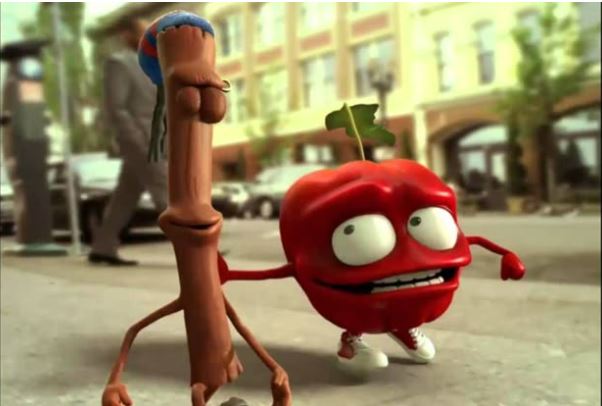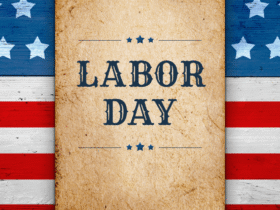The breakfast table. On one side, there may be hot parathas and bhaji, on the other, there may be egg and roti. But in this era of globalization, another food has now taken its place on the table of many Bengali families—breakfast cereal. And whenever it comes to breakfast cereal, the image of colorful boxes, sweet taste, and crunchy grains mixed with milk comes to mind. A well-known name in this world is “Apple Jacks,” and its inseparable part is its cinnamon flavor, which is often known as “Cinnamon Stick“.
“Apple Jacks Cinnamon Stick” specifically refers to the version or feature of the Kellogg’s cereal called ‘Apple Jacks’, where the sweet taste of apples is combined with the warm and tangy aroma of cinnamon. Its name does not just refer to a product, but it also takes a generation back to their childhood, presents a piece of American culture to the world and makes us think about various aspects of modern eating habits.
The Birth of Breakfast Cereal: From Healthy Food to Sweet Business

To understand the story of Applejack, we have to go back to 19th century America. While we know cereal today as a baby food or a quick snack, it was born for a completely different purpose—as part of a healthy lifestyle.
- Sanitarium Food: In 1863, Dr. James Caleb Jackson created the first dry, baked cereal, called “Granula.” It was made for patients suffering from digestive problems. Later, Dr. John Harvey Kellogg, superintendent of the Battle Creek Sanitarium in Michigan, and his brother Will Keith Kellogg (W. K. Kellogg), took the idea further. They believed that a vegetarian and healthy diet could solve many diseases. Corn flakes were born as a result of their experiments. The goal was to create an easily digestible and healthy breakfast for patients.
- Marketing and Change: W. K. Kellogg was more of a business man than his brother. He realized that this healthy food could be popular with the general public. In 1906, he founded the Kellogg Company and began producing corn flakes commercially.
By the middle of the 20th century, the character of cereal had changed dramatically. The idea of healthy food was gradually being replaced by taste and appeal. Companies realized that their main customers were children. And the easiest way to attract children was with two things—sugar and cartoon mascots. From this philosophy was born Frosted Flakes, Froot Loops, and of course, Apple Jacks.
The emergence of Apple Jacks: a sweet combination of apples and cinnamon
In 1965, Kellogg’s introduced a new cereal called “Apple O’s.” It was originally a ring-shaped product with apple flavor. In 1971, it was renamed “Apple Jacks.” With the name change, an important addition to its flavor was cinnamon. The sweet taste of apple combined with the warm, slightly tangy aroma of cinnamon created a new and interesting flavor profile that quickly won people over.
This cinnamon flavor became an integral part of Apple Jacks’ identity, which was also reflected in its mascot or advertising character.
“Cinnamon Stick” Mascot: When a Character Becomes a Brand Symbol
Cereal companies have always used cartoon mascots to attract children. Apple Jax was no exception. Although its mascots have changed over time, the most popular and memorable pair was a naughty apple (Bad Apple) and a calm, intelligent cinnamon stick or cinnamon stick with a Jamaican accent, whose name was “Cinna-Mon”.
The advertisements showed “Bad Apple” always trying to catch Cinna-Mon by being naughty, but Cinna-Mon always reached the cereal bowl first due to its intelligence. This fun race between them was very popular with children. The main message of the advertisement was—”Apple Jax tastes not only like apples, but the sweet taste of cinnamon is the real winner.”
This “cinnamon” character became so popular that the phrase “Apple Jacks Cinnamon Stick” became a household name. Although Kellogg’s launched a separate cereal called “Cinnamon Jacks” in 2013, which featured cinnamon, the concept of “cinnamon stick” is still most associated with the original Apple Jacks.
Taste and texture: Why is it so popular?

Apple Jacks Cinnamon Sticks’ popularity is largely due to its unique taste and texture.
- Balance of taste: It has a perfect balance of the mild sweetness and slightly sour taste of apples with the warm and sweet aroma of cinnamon. The taste is not overly sweet, but has a spicy undertone that even adults like.
- Crunchy feel: The cereal retains its crunchiness for a long time even after mixing it with milk. It softens after absorbing the milk, but does not melt completely.
- Colorful appearance: Its orange and green (and sometimes red) colored rings are attractive to look at, which is especially attractive to children.
- Milk change: After eating the cereal, the milk remaining at the bottom of the bowl also becomes colored with the taste of apple and cinnamon, which gives an extra pleasure after eating.
With all these features, Apple Jacks has become not just a food, but an enjoyable experience.
Apple Jacks around the world: Globalization of American culture
Apple Jacks is originally an American product and its largest market is in North America. But with the touch of globalization, it has now reached different parts of the world. It is also available in Asia, Europe and Latin American countries through supershops, online grocery and imported goods stores.
Apple Jacks Nutrition Facts: Is it Healthy?
Apple Jacks is often advertised as fortified with vitamins and minerals. But how healthy is it? Let’s take a look at its nutritional value.
Beneficial Aspects:
- Vitamins and Minerals: Kellogg’s adds iron, B complex vitamins (such as thiamin, niacin, B6) and vitamin D to their cereal. These are essential nutrients for the body.
- Whole Grain: Apple Jacks is made with a variety of grains, including oats, corn and wheat. Whole grains are a good source of fiber, which aids in digestion.
Reasons for concern:
- Sugar content: One of the biggest criticisms of Apple Jacks is its high sugar content. Each serving (about 39 grams) can contain 12-15 grams of sugar, which is equivalent to about three teaspoons. Consuming so much sugar at breakfast can increase the risk of obesity, tooth decay, and type 2 diabetes in children.
- Artificial colors and flavors: Artificial colors and flavors are used to maintain its attractive color and taste, which some health experts say may be harmful to children.
- Low protein and fiber: Although it contains whole grains, its fiber content is greatly reduced due to processing. It is also very low in protein. As a result, even if you eat Apple Jacks, it does not last long.
Decisions:
There’s little chance Apple Jacks Cinnamon Sticks would be called a healthy snack. They are basically a “treat” or special food, which is not worth including in your daily diet. If you have to eat it, it should be eaten in moderation and can be nutritionally balanced by adding healthy ingredients like fruits or nuts.
Marketing Strategies and Controversies

Apple Jacks’ marketing has always been focused on children. Tactics like colorful boxes, fun mascots, and free toys with the packet have played a big role in its sales. However, its marketing has not been without controversy.
In 2005, one of its advertisements was heavily criticized. The advertisement depicted the “Bad Apple” character as a sour and annoying fruit and said that Apple Jacks did not taste like apples, because cinnamon was the best flavor. Critics said that Kellogg’s was discouraging children from eating healthy fruits (apples) in order to sell their cereal. In the face of this controversy, Kellogg’s was forced to change its advertising message.
This incident shows us how big companies use the psychology of children to sell their products and how far-reaching its social impact can be.
Frequently Asked Questions (FAQ)
Here are some common questions and answers about “Apple Jacks Cinnamon Sticks”.
Question 1: Is “Apple Jacks Cinnamon Sticks” a separate product?
Answer: There is no single Kellogg’s product with this name. The name is derived from the apple and cinnamon flavor of Apple Jacks cereal and its popular mascot “Cinna-mon” (a cinnamon stick). This refers to the flavor profile of Apple Jacks, which is influenced by cinnamon.
Question 2: Doesn’t Apple Jacks actually taste like apples?
Answer: This is an interesting question and the answer was given in the advertisement. Apple Jacks doesn’t just taste like apples, as it has a strong cinnamon presence. The flavor is a blend of apple and cinnamon, which makes it unique.
Question 3: Is it a good breakfast for children?
Answer: Nutritionally, it is not an ideal snack for every day. It is very high in sugar. However, it can be eaten in small quantities occasionally. For a balanced snack, milk, fresh fruit (such as banana or berries) and some nuts can be added to it.
Question 4: Are Apple Jacks vegetarian or vegan?
Answer: Apple Jacks is vegetarian, because it does not contain any meat or fish. However, it is not vegan. Because it is fortified with vitamin D3, which is usually made from lanolin obtained from sheep’s wool. In some cases, gelatin may also be used, which comes from animal sources.
Question 5: What is the difference between regular Apple Jacks and Cinnamon Jacks?
Answer: Regular Apple Jacks has a balance of both flavors—apple and cinnamon. On the other hand, “Cinnamon Jacks” released in 2013 was a different kind of cereal, with cinnamon and brown sugar as the main flavors and no apple flavor. Its mascot was also “Cina-Mon”.
Conclusion: A cultural icon
“Apple Jacks Cinnamon Sticks” is not just a breakfast cereal. It is more than that. It is a part of American pop culture that has spread around the world. It is an example of the eternal conflict between health and taste that modern people face. It is a case study in the power of advertising and its impact on children.
A bowl of Apple Jacks on the breakfast table may remind you of a lazy morning from your childhood. Or it may be an opportunity for you to discover a new taste. But behind each crunchy grain lies a long history, a fascinating tale of complex trade and cultural exchange around the world. So the next time you see a box of this colorful cereal, you might think not only of its taste, but also of the deeper meanings behind it.

Hi, I’m M Saif, a digital marketer with a strong focus on SEO and content writing. I help businesses improve their online visibility, drive organic traffic, and create engaging content that converts. With a results-driven approach, I work on strategies that not only boost rankings but also deliver real value to audiences.











Leave a Reply